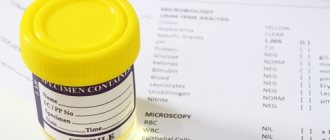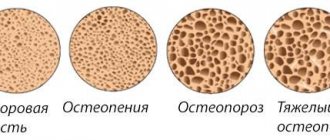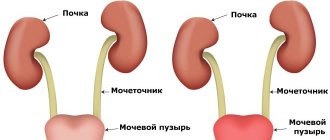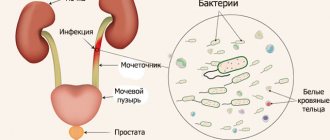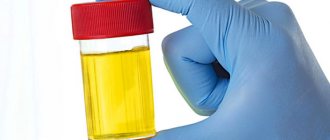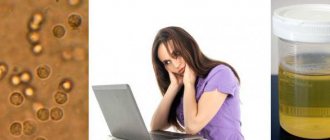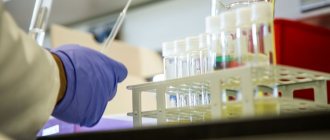Urinalysis is one of the most common forms of primary diagnosis in children. With its help, you can recognize the disease at an early stage and prescribe proper treatment. Children are often prescribed a general analysis. But other types of studies are carried out for detailed diagnosis. The appropriateness of their implementation is determined by the doctor. Urinalysis according to Nechiporenko in children is one of the most reliable research methods.
Features of the method
Analysis using the Nechiporenko method is a study of urine, in which microscopy of its sediment is performed to determine the number of leukocytes, erythrocytes and cylinders in 1 ml of volume. It is recommended in situations where changes in the overall analysis have been detected. It can be used to confirm or exclude renal pathologies. You can return it for free.
What parameters are determined during the study?
In general clinical studies of human biomaterials, the total number of blood cells and cylinders in one milliliter of the studied sediment is calculated. As a rule, doctors prescribe general clinical tests, and if the results suggest the development of pathology, then a clinical study is prescribed using the Nechiporenko method.
Leukocytes
These are active cells circulating in the body's circulatory system. They are intended for immune control. If an infection occurs, toxic or foreign substances or bodies enter the body, it is these cells that begin to fight negative factors.
If the presence of leukocytes in the urine exceeds normal levels, this indicates the presence of inflammation in the urinary system or in the kidneys. It is necessary to clarify the location of the localization in further studies - the ureters, bladder, area of the renal pelvis, prostate and urethra in men.
Red blood cells
These are tiny red blood cells. It belongs to the most numerous cells of the human circulatory system, the purpose of which is to transport oxygen throughout the body and nourish tissues and organs.
The permissible content of red blood cells in urine does not imply their visual detection, or perhaps, but in minimal quantities, no more than 3 for a visible area. If their number exceeds this value, then this is an indicator of serious pathology of the urinary tract or kidneys.
More on the topic: Symptoms and treatment of bladder injuries
Cylinders
Cylinders are protein bodies that can form in the kidney tissue or tubules when a serious pathology occurs. The casts vary in composition - some include protein, others may contain red blood cells or exfoliated cells in the renal tubules.
Indications for use
If dangerous changes are observed in a clinical study, an accurate diagnosis can be made through the Nechiporenko study.
Why it is carried out:
- To identify inflammatory processes in the urinary system (urethritis, cystitis, pyelonephritis).
- To assess kidney damage in a number of systemic diseases (systemic lupus erythematosus).
- For a more accurate diagnosis of diseases of the urinary system.
- To monitor the treatment of pathologies of the urinary organs.
In what cases is it indicated:
- For symptoms of diseases of the urinary system (changes in color, clarity of urine, pain during urination).
- If there are deviations in the overall analysis.
- For systemic diseases in which there is a risk of kidney damage.
- As a preventive measure.
- It is not prescribed to absolutely everyone. If the general examination does not reveal any deviations, there is no point in carrying out additional procedures.
The purpose of the technique according to A. Z. Nechiporenko
Since urine is filtered by the kidneys, various types of protein fractions (casts), leukocytes and erythrocytes may precipitate.
- Leukocyte cells are essentially killer cells. They are responsible for immune phagocytosis. They are present not only in plasma, but also in any fluid and tissues of the body. With any inflammatory reaction, they all rush to the source of inflammation to suppress it. Therefore, an increased concentration of leukocytes in tests always indicates the development of an inflammatory process.
- Red blood cells perform the role of transport in the body, delivering oxygen to various tissues and organs. Under normal conditions, they should not be present in urine at all. Their presence in urine can only be due to serious pathology in the urinary system.
- The presence of various types of protein fractions (hyaline casts, granular, erythrocyte, waxy, epithelial, etc.) in the urinary sediment is a characteristic indicator of various pathological processes in the renal tubular structure.
If the analysis of a general urine test shows an excess of the number of leukocytes, red blood cells and cylinders according to the permissible norm, an analysis using the Nechiporenko method will determine their exact concentration, confirm or deny the presence of inflammatory diseases of the urinary system of an acute or chronic nature.
Unlike general monitoring of urine, where sedimentary elements are counted under a microscope in a certain field of view, A.Z. Nechiporenko’s analysis is carried out with a counting camera by counting elements in sediment of 1 ml of urine. To exclude erroneous diagnosis, a urine sample is taken from the average morning urine sample and should be examined within the next two hours.
Preparing children for testing
In order for the results of a urine test to be reliable, it is necessary to properly prepare the child.
- The day before passing urine, it is recommended to remove foods from your diet that can change the color of urine.
- You should not undergo the examination while taking medications that may affect the results.
- Before the examination, you should avoid physical activity.
- It is not recommended to collect urine according to Nechiporenko for children who have flu symptoms.
- Teenage girls should not collect a sample during their period.
Necessary preparation
Before collecting urine for analysis, the child should be prepared. If these recommendations are not followed, the data obtained will be obviously erroneous, which will lead to incorrect diagnosis.
Adults are explained in detail how the baby's urine is collected, when it needs to be done, and what kind of actions precede the research process.
One to two days before the procedure, you must follow certain rules:
- The baby’s active movements should be limited as much as possible and various types of physical activity should be prohibited. If your child is enrolled in a sports section, you will have to miss classes.
- It is necessary to take care of proper nutrition. Fried, fatty foods, and foods containing artificial dyes should be excluded from the daily diet.
- Try to keep your baby out of the sun or in a too warm room for a long time, as this will lead to increased loss of moisture from the body in the form of sweat.
- The baby needs to drink a lot, since water has a direct effect on the performance of the organs of the urinary system and on the concentration of urine sediment.
- If a few days before the examination the baby’s temperature rose, diarrhea was observed or vomiting occurred, it is recommended to postpone the examination to another date.
- Urine collection should be performed early in the morning, when the child has woken up but has not yet had breakfast. Before collecting urine, it is imperative to treat the genitals so that the results of the analysis are as reliable as possible.
- When the urine gets into a special sterile container, it should be promptly (within one to two hours) sent to the laboratory for examination.
Rules for collecting urine in children
Parents are required to know how to properly collect a sample from their child.
- Before you start collecting urine, you should wash your baby. Girls should wash not only their labia, but also their anus.
- Urine needs to be collected in the morning.
- Not the entire portion of urine is used for study. To get what you need, you should ask the baby to urinate a little, and only after that start collecting. If the baby is a newborn, you should just wait until the first portion of urine passes.
- The resulting sample should be submitted for examination no later than two hours after collection.
How to collect urine from a child
For young parents, the need to collect urine often causes panic, since collecting material for research from a child can be quite difficult.
On the eve of the test, the child must be given a sufficient amount of fluid to drink, which will guarantee that he will urinate in the morning. The baby's genitals are washed thoroughly under running warm water. There are several options for collecting analysis:
- A urinal is attached externally around the genitals and material is collected into it;
- the child is placed on a flat surface, and a previously prepared container is placed under the stream;
- The child is picked up in the bathroom and urine is collected when urinating.
To conduct research, it is enough to take 20-35 ml of urine. The following can lead to unreliability of the resulting analysis:
- non-compliance with the rules for taking fluids;
- collection of urine for diaper rash on the child’s body;
- the baby’s tendency to allergic reactions and their intensification on the eve of urine collection;
- prolonged abstinence of the child from urination.
To enhance natural urges, you can turn on the water in the tap or make appropriate sounds. Children under 1 year of age are recommended to be stroked on the back along the spine. If all urine was collected for research, the pediatrician must be notified about this.
What the analysis shows
What the analysis collected from children shows is that the Nechiporenko study allows you to determine the number of leukocytes and erythrocytes, as well as cylinders per 1 ml of urine.
Decoding
The Nechiporenko urine test in children is interpreted by a doctor. Normal indicators are presented in the table in the photo:
Each element speaks to a specific type of problem. If hematuria is observed, this indicates the development of cystitis or urolithiasis. An increased level of leukocytes indicates the development of pyelonephritis or nephrolithiasis.
Norm of leukocytes in children
White blood cells are cells that circulate throughout the circulatory system and control the functioning of the immune system. If there is a danger of an infectious lesion, they accumulate at the source of this lesion and try to destroy the microbes.
The norm of leukocytes for children of different ages is up to 2000 per 1 ml of urine.
Norm of red blood cells in children
Erythrocytes are red blood cells that circulate throughout the vascular bed. Red blood cells in a child’s urine should not exceed 1000 per 1 ml. This indicator is the same for both infants and older children. Most often, there are no red blood cells at all.
Due to the work of the glomerular renal apparatus, the reverse process of reabsorption of all elements of blood cells is carried out. If a large number of red blood cells are observed in the sediment, this indicates a violation of the filtration functions of the kidneys.
Cylinders are normal in children
Cylinders are compounds consisting of protein molecules. If dangerous damage to the kidneys occurs, they accumulate in the tubules of these organs. The nature of the lesions can be infectious or tumor.
The norm in children is no more than 20 cylinders per 1 ml. If there are more of them, this indicates that there is kidney dysfunction.
Rules for collecting urine for the Nechiporenko method
In order for the test to be accurate, a urine sample must be collected correctly. It is important to follow the basic rules for collecting biomaterial:
- When washing before collecting samples, the use of soap and soap-containing hygiene products is prohibited. It is recommended to wash only with clean water, but without fail. The external genitalia may contain many bacteria in its impurities, which, when urinated, end up in the liquid. The use of soap and other disinfectants is prohibited, since residues of washing gels can get into the container with urine for research and deteriorate its qualitative and quantitative composition;
- To collect urine for analysis, you should take only sterile containers; a plastic glass for laboratory research or a container with a hermetically sealed lid would be optimal;
- For women undergoing menstruation, it is necessary to postpone the collection of fluid for analysis to a later date. Menstrual blood that is released can be washed away from the genitals, and in a laboratory test it is perceived as bleeding from the genitourinary system. Then the results will show the number of increased red blood cells in the urine of women;
- When collecting urine for testing, you should not take antibiotics, or consume products with the properties of changing the color of the liquid. The color of the liquid is one of the indicators being studied;
- When collecting urine, you should flush the liquid into the toilet during the first seconds of urination, and collect the remaining portion in a container;
- Nechiporenko's analysis requires morning urine collection, which must be delivered within one and a half to two hours. The reasons for the strict requirement are the development of bacteria in the container when the liquid is stored for a long time in a closed state.
Collecting urine from a child
The collection of children's urine follows the same rules as for adults, with the exception of infancy in children. Parents should wash their children's genitals themselves, observing the direction of movement from front to back.
When taking urine from a child over 2 years old, it is necessary to explain to him that he first needs to urinate in a pot, then stop and collect the rest of the liquid in a container prepared by the parents (at least 10 ml).
If the child is less than 2 years old, then a special urinal is used. He collects urine, part of which is poured into a container for laboratory testing. Now you can easily take tests even on a newborn child, since urinals for children of different sexes are available for sale.
More on the topic: Why are leukocytes in the urine of infants elevated?
What do deviations from the norm indicate?
The doctor can decipher the results and understand what pathologies are indicated by deviations from normal values.
Leukocytes
An increased number indicates that the cause of the pathology is an infection. In this case, it is worth suspecting the presence of the following pathologies:
- inflammation in the kidneys (glomerulonephritis, pyelonephritis);
- inflammation in the bladder;
- urolithiasis disease.
Red blood cells
If the interpretation of the result showed their increased level, this may indicate the following pathologies: tumor, chronic kidney pathology that developed due to diabetes mellitus.
Cylinders
Granular casts should be absent in healthy children. They appear due to the death of the mucosal cells of the inner walls of the renal tubules. Waxy ones are observed in the urine of children suffering from renal amyloidosis.
Red blood cell casts indicate the presence of terminal vein thrombosis. The presence of epithelial ones indicates dangerous pathologies. This could be a viral infection, toxicosis caused by salicylate poisoning.
Increased indicators of cylinders in infants indicate the presence of renal failure and autoimmune diseases.
A poor analysis may indicate not only the presence of pathology, but also that the urine collection algorithm was violated.
We recommend that you read:
- Normal indicators in urine according to Nechiporenko’s method.
- Cystitis in children 6-9 years old.
- Cystitis in a three-year-old child.
Preparing for analysis
For research, according to Nechiporenko’s method, it is customary to prepare an average portion of urine excreted in the morning, immediately after waking up. The first portion of urine is flushed down the toilet within 2 seconds, after which about 20 ml is collected into a container, and the remainder is flushed down the toilet again. To obtain the most reliable analysis indicators, you must follow simple but mandatory rules. Here they are:
- A container for the urine sample is first prepared. It is best to use a plastic container with measuring marks, purchased from a pharmacy. For an infant, you need to purchase a special bag - a urine bag. It fits on the baby like shorts and is secured with Velcro. After urine is released, it is carefully removed, at least 10 ml of liquid is poured into a container and sent to the laboratory;
- Before collecting the sample, the child must be thoroughly washed. This must be done to prevent foreign cells and microorganisms from entering the sample, which are always present in large quantities on the tissues of the external genitalia. Soap and other detergents should not be used, since their residues on the skin can accidentally be washed off along with urine into the sample and greatly distort the results of the study;
- For children of a smart age, you need to give instructions - explain to them that when filling a glass, you cannot touch its inner walls and neck with your hands, and after filling, it must be closed immediately;
- Urine collected for research should reach the laboratory no more than two hours after collection, otherwise its physicochemical parameters may change significantly, and the microflora contained in it will begin to actively multiply, and this will lead to distorted results and require re-analysis.
In addition to the basic rules, there are some points that can also affect the reliability of the results of the Nechiporenko analysis. Not worth it:
- Take a urine test while taking antibiotics;
- On the eve of the test, eat foods that color the urine - beets, blackberries, carrots and others;
- Take vitamin “B” and any other medications that contain actively coloring pigments. These drugs include most artificially synthesized drugs;
- Get tested for girls during their periods. Blood that accidentally enters the test from the vagina can lead to incorrect interpretation of its results.
Possible distortion of results
If the material was taken incorrectly, the data will be distorted. Here are the factors that influence the result:
- Long-term storage of material. In an alkaline environment, red blood cells can be destroyed.
- Physical strain and trauma to the urethra. They cause hematuria, which shows an increased number of red blood cells. The same situation can occur if urine was collected during menstruation.
- Insufficient genital hygiene before giving urine. As a result, the study may show a large number of leukocytes.
- Proteinuria. Because of this, cylinders may be missing.
- Taking certain medications.
Collection of analysis from infants
Many parents are perplexed about how to collect a urine test from a child who is less than a year old. After all, it is difficult to do this. To take urine from a baby, you should use a urinal. It consists of an oilcloth with a hole and a surface with a sticky layer. The sticky side will stay on your baby's skin until he urinates. Before collecting urine from a child, you should wash it.
The baby should be placed on the changing table and calmed down. You need to place a container between its legs. After this, the baby will need to be lifted and waited until he goes down in a small way. After this, the urine bag can be peeled off from its legs, and the collected urine can be poured into a separate container.
The method of collecting urine using a urine bag is suitable for both little boys and girls. It can be used for both newborns and one-year-old children.
How to collect material for urine analysis according to Nechiporenko?
It is necessary to collect urine from children early in the morning, following a number of rules:
- Urine is collected before eating and drinking.
- Thorough toileting of the child's genitals. If necessary, use soap or intimate gel with complete rinsing of the hygiene product. Poor hygiene of the child will affect the analysis; a pathological number of leukocytes will be recorded in the urine.
- Collecting an average portion of urine: urination begins in the toilet/potty, continues into a prepared container, and ends in the toilet/potty. This is a very important point! The first portion of the material is distinguished by many leukocyte cells.
- For laboratory research, 10-20 ml of biomaterial is enough, so there is no need to fill the container.
- Immediately close the lid of the urine container and deliver it for examination within two hours.
- Avoiding severe shaking during delivery to the laboratory.
- Elimination of heating and freezing of the material.
Attention! A child cannot take a urine test according to Nechiporenko if, two days before the test, he underwent cystoscopy (a procedure for inserting a camera with a probe into the bladder) or underwent surgery.
How to collect urine from a baby?
Collection of biomaterial for urine analysis according to Nechiporenko in infants is carried out:
- urinal;
- plastic bag;
- plastic or glass container.
